Potala Palace is the most symbolized figure of Tibet and it can be seen almost from everywhere in Lhasa, standing over the Red Hill (Marpo Ri), 130 meters above the Lhasa valley, the large building consists of 1000 rooms, with chapels, schools, monasteries, jails, government administrative offices, residences and tombs of successive Dalai Lamas made it as a self-contained world.
The whole structure is divided into Red Palace(Podrang Marpo) and White Palace(Podrang Karpo) with distinct colors, where the Red Palace was mainly used for ritual purposes, and the White Palace was used for governmental and administration fields.
A Guide to Potala Palace History
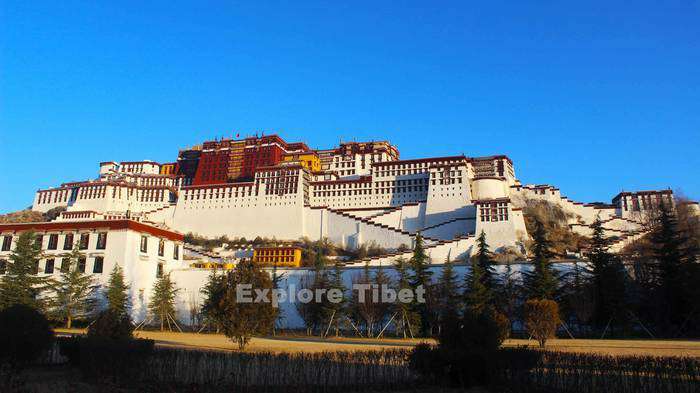
According to the old legend, Mount Potala or Red Hill was the abode of the Bodhisattva Chenrezig (Avalokiteshvara) and all Tibetans are followers of Avalokiteshvara who later came in human form as the Dalai Lamas. First in the 7th century AD, the small on Mount Potala or Red Hill was used as a meditation retreat by the 33rd Tibetan king Songtsen Gampo. Later in 637 Songtsen Gampo built a palace on the hill as a meditation chapel for him and his Chinese wife Princess Wencheng, this two store structure is still can be seen within the Red Palace.
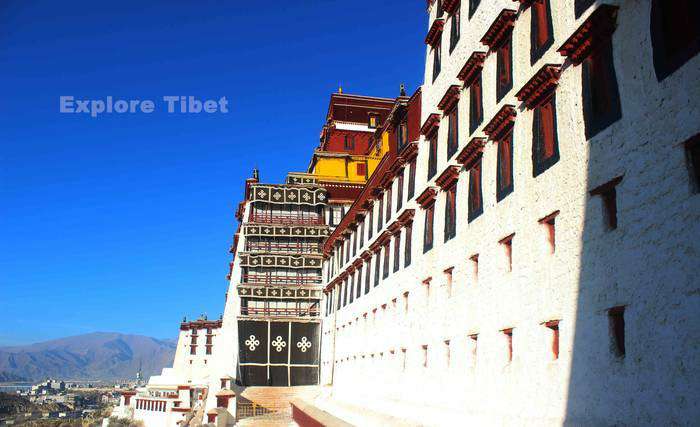
Construction of the present palace began in 1645 during the reign of the fifth Dalai Lama-Lobsang Gyatso and by 1648 the Potrang Karpo(White Palace) was completed and later the Potrang Marpo(Red Palace) was added between 1690 and 1692.
But the history of the Red palace is always subject to some dispute, most of Tibetan history agreed that the fifth Dalai Lama died in 1682 and his death was concealed by the regent Dese Sangye Gyatso until the completion of the red palace, the construction of Potala was completed with labors of more than 7000 workers and 1500 artists and craftsman at that time.
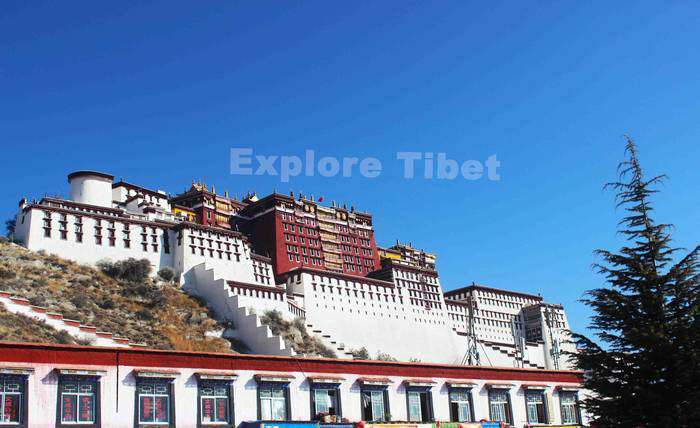
In 1922 the 13th Dalai Lama renovated many chapels and assembly halls in the White Palace, he also added two stories to the White Palace which include his residence and cabinet meeting halls that still can be seen, it is the only part of the White Palace that visitors can visit in these days.
The Palace was only slightly damaged by some natural disasters and some other incidents, unlike most other Tibetan monasteries, it was not plundered by the Culture Revolution and Red Guard in the 1960s and 1970s it was protected through the personal intervention of Chou En-Lai. As a result, all the chapels and their artifacts are very well preserved so far.
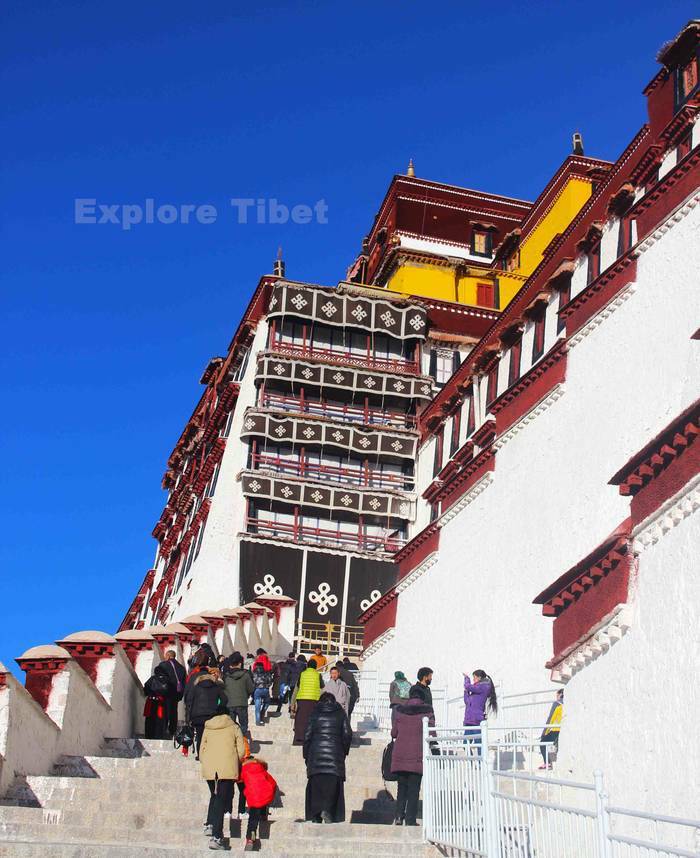
From the eleventh century, the palace was called Potala. This name was probably derived from Mt. Potala, the mythological mountain abode of the Bodhisattva Chenresi (Avilokiteshvara) in southern India. Emperor Songtsen Gampo had been regarded as a manifestation of Chenresi, he built his meditation cave on Mt. Potala for the first time.
And after 10 centuries the 5th Dalai Lama rebuilt the structure based on the meditation cave of Emperor Songtsen Gampo, its interior space being in excess of 130,000 square meters. Fulfilling numerous functions, the Potala was first and foremost the residence of the Dalai Lama and his large staff.
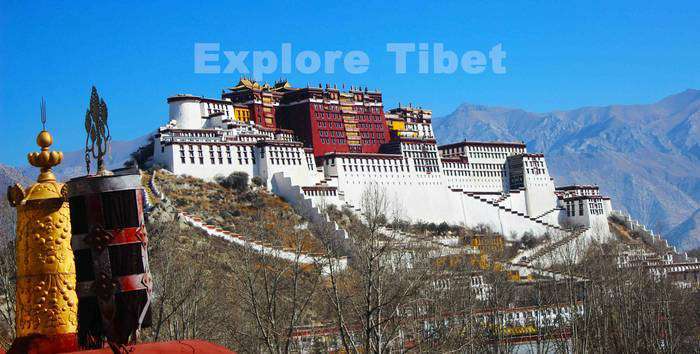
Besides, it was the seat of the Tibetan government, where all ceremonies of state were held; it housed a school for religious training of monks and administrators, and it was one of Tibet’s major pilgrimage destinations because of the tombs of past Dalai Lamas.
Within the White Palace are two small chapels, the Phakpa Lhakhang and the Chogyal Drubphuk; dating from the seventh century, these chapels are the oldest surviving structures within the palace and also the most sacred. The Potala’s most venerated statue, the Arya Lokeshvara, is housed inside the Phapka Lhakhang, and every day it draws thousands of Tibetan pilgrims in the early days.
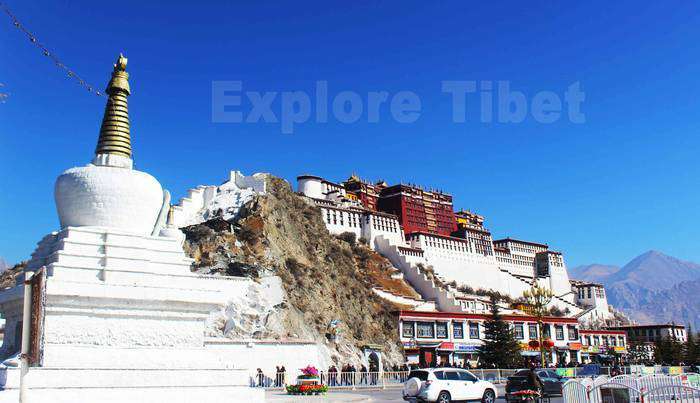
The Potala Palace was inscribed on the UNESCO World Heritage List in 1994. Rapid modernization has been a concern for UNESCO, however, which expressed concern over the building of modern structures immediately around the palace which threaten the palace’s unique atmosphere.
The Chinese government responded by enacting a rule barring the building of any structure taller than 21 meters in the area. UNESCO was also concerned over the materials used during the restoration of the palace, which commenced in 2002 at a cost of RMB180 million (US$22.5 million), although the palace’s director, Jampa Kalsang, has clarified that only traditional materials and craftsmanship were used for the restoration. The palace also received restoration works between 1989 to 1994, costing RMB55 million (US$6.875 million).
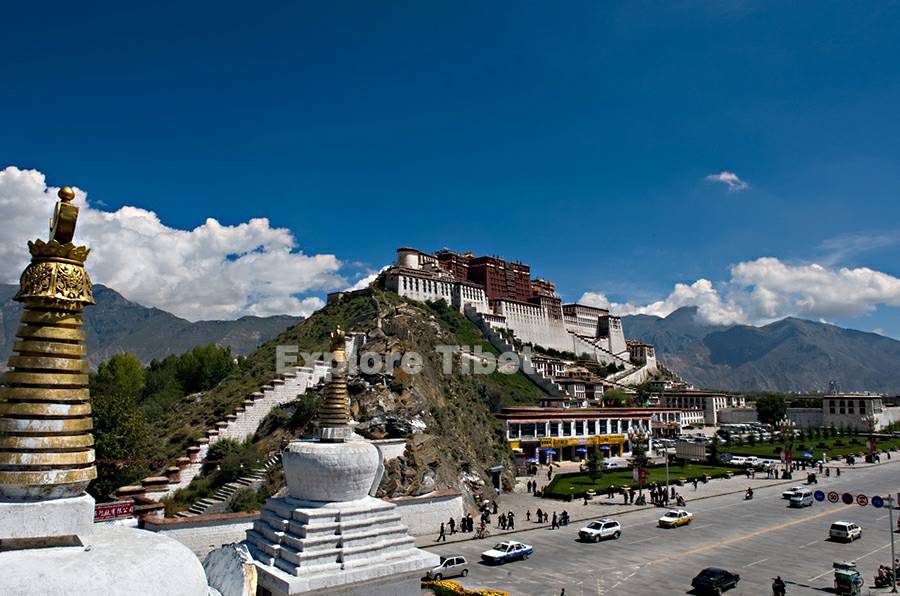
The number of visitors to the palace was restricted to 1,600 a day, with opening hours reduced to six hours daily to avoid over-crowding from 1 May 2003. The palace was receiving an average of 1,500 a day prior to the introduction of the quota, sometimes in excess of 5,000 in one day. Visits to the structure’s roof were banned after restoration works were completed in 2006 to avoid further structural damage.
Visitorship quotas were raised to 2,300 daily to accommodate a 30% increase in visitorship since the opening of the Qinghai-Tibet railway into Lhasa on 1 July 2006, but the quota is often reached by mid-morning. Opening hours were extended during the peak period in the months of July to September when over 6,000 visitors would go to the site.

Its outstanding architecture and rigid foundation made it happen to stand up on a small hill for more than 400 years, this nonparallel Tibetan monastic architect attracts the attention of worldwide famous architects and hard to believe it was erected in the 17th century.
If you want to know more about the Potala palace tour or plan to visit Tibet, you can contact us at [email protected].
